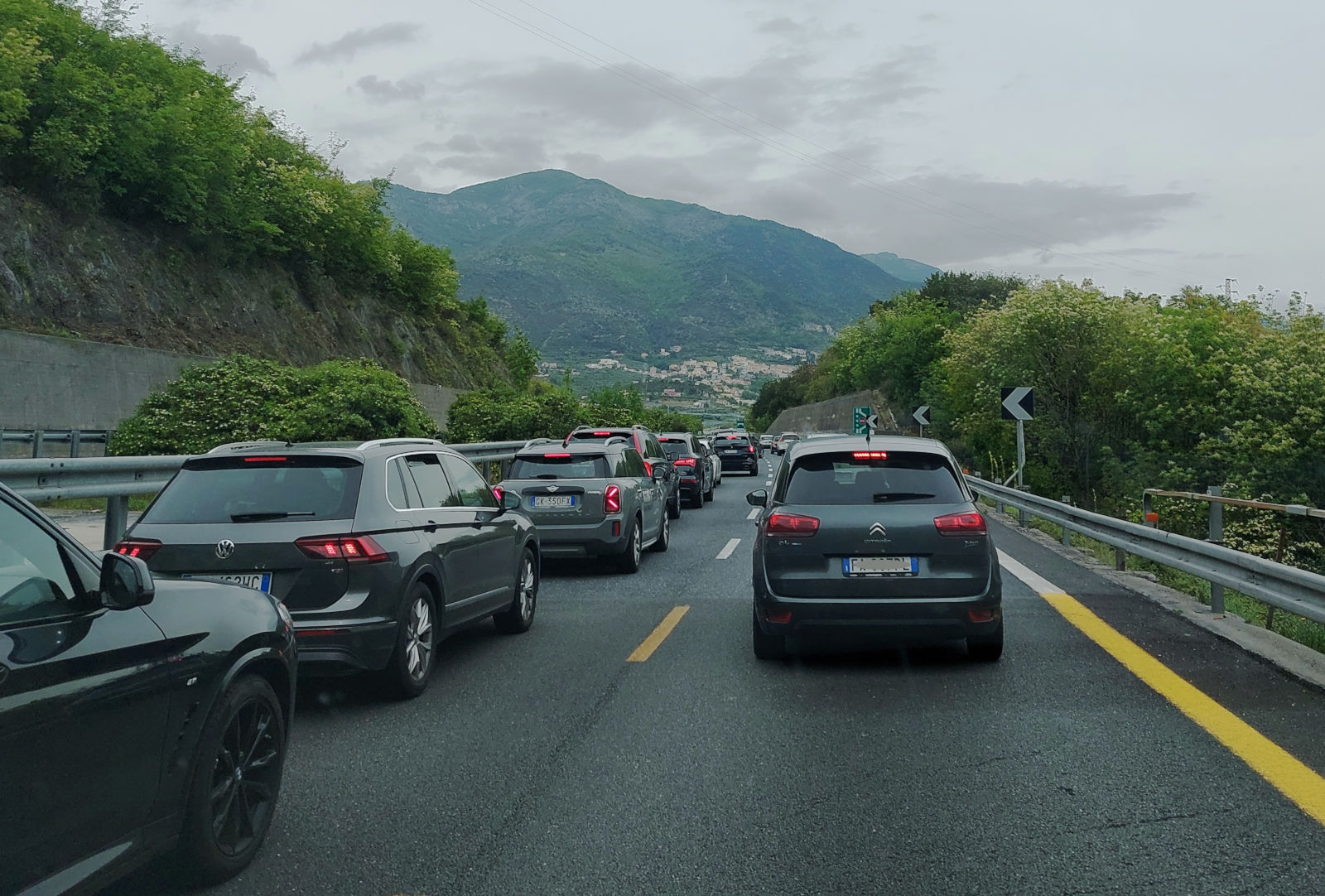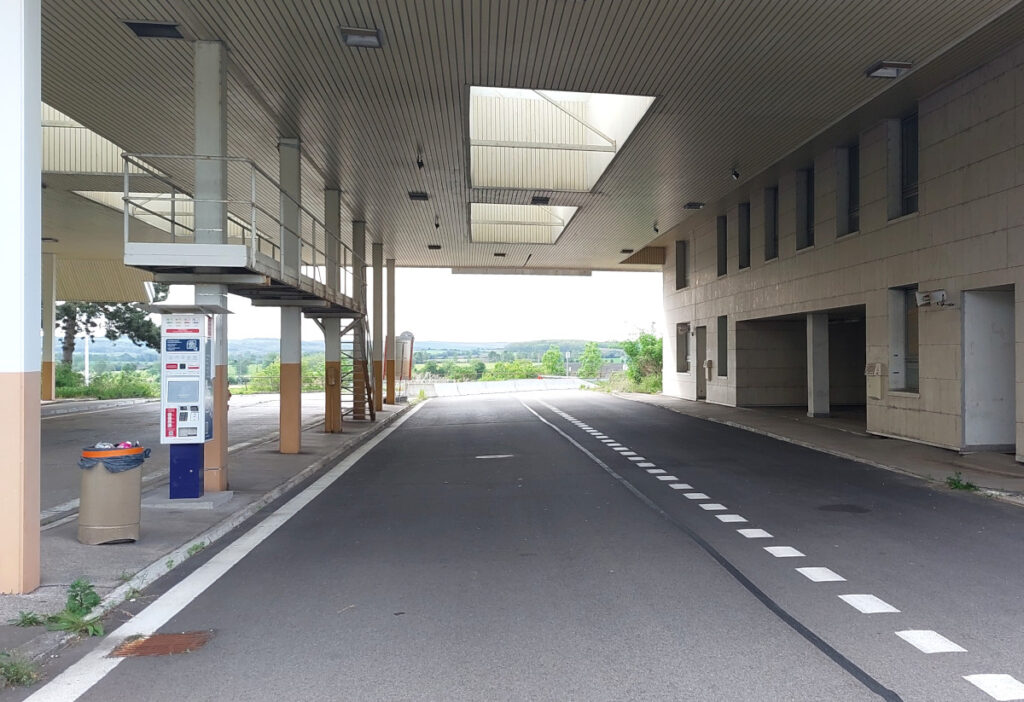
A long, but exciting and entertaining road trip took us across Europe from Estonia to southern France in October. All eight countries that were along our route are members of European Union. Thanks to EU, we didn’t have to worry about phenomenal roaming charges for our mobile phone communications, or extra foreign currency charges in those countries that have adopted the Euro (Poland and Czech Republic haven’t, but they are working on it). As a relatively frequent traveler in Europe, however, nitpicker realized there is something the Europe Commission should improve: national road toll systems should be harmonized before drivers who cross borders go nuts with complex country specific rules.
Our trip took us to eight EU countries, and every country – except for two that happen to use the same system – has its own method of collecting road tolls. It is insane. It is plenty of work to do the research before a journey – if a driver even is aware that tolls in some countries have to be paid in advance. It is painfully difficult to discover where, when and how to pay the tolls. Family cars, motorcycles, vans, motorhomes, lorries, trucks, all vehicles have their own toll categories. Good luck – and patience – with all of that.
Our experience with the wild west of country specific road tolls wasn’t pleasant to say the least. The one thing that worked well in every country was the online purchase of electronic vignettes. We were traveling in a campervan, so the information below focuses that vehicle category:
- Estonia: no tolls for vehicles under 3500 kg. The major travel corridor through the Baltic countries to Central Europe is called Via Baltica, road number E67, that starts or ends in Tallinn. The other end of Via Baltica is in Warsaw or Prague, depending on who you ask.
- Latvia: tolls apply to all vehicles with maximum weight over 3000 kg. Must be purchased before entering the country. When you purchase your electronic vignette make sure you enter the correct license plate because plates are monitored on the road.
- Lithuania: all vans and larger vehicles must pay a toll if they travel along the E67 Via Baltica. Online purchase before entering the country.
- Poland: vehicles with more than 3500 kg of maximum weight must pay a toll. Online purchase before entering the country. Additionally, all vehicles must pay on a few highways that have toll booths (cash or international payment cards accepted).
- Czech Republic: all vehicles on four wheels with maximum weight of up to 3500 kg must have an electronic vignette. I highly recommend that you buy your vignette online because the automatic machines at borders may be out of order. Get it before entering the country and notice that it is valid until midnight only – not for 24 or 48 hours.
- Austria: all motorcycles and vehicles with maximum weight of 3500 kg must have an electronic vignette. Most highways and a few other roads require it, so it is safest to purchase the vignette in advance. In addition to the vignette, some highways and mountain roads charge a fee as well. These roads have toll booths that accept cash and payment cards.
- Italy: all vehicles pay tolls on highways. There are booths where payments are collected. Cash and/or payment cards are accepted.
- France: all vehicles pay tolls on highways. There are booths where payments are collected. Cash and/or payment cards are accepted.
Nitpicker’s detail-focused brain is still fuming because of all the effort required to make sure that we were following each country’s regulation. One morning in Czech Republic nitpicker woke up at six o’clock in the morning to check the validity of the vignette. It wasn’t valid anymore, because in this country vignettes expire at midnight. Thanks to EU’s mobile phone roaming regulation, however, buying a new vignette on a phone was possible there and then without extra roaming cost.
Thanks also to the web site https://www.tolls.eu/ that has plenty of information and links, for instance, to pages where you can buy electronic vignettes for each country.

What could EU do to harmonize toll payments
We can move within the Schengen countries in Europe freely, but if we happen to be traveling by car we have to do extensive research before crossing borders. National road toll systems are a nightmare to research and follow their rules. It is something that EU should harmonize to stop wasting resources on national systems. In northern Europe there are countries without any road tolls, but the pressure has been on for years in many countries that they start collecting money from drivers who actually use the roads, tunnels, and bridges.
Soon, nitpicker will need a personal artificial intelligence (AI) agent to help manage the tolls according to each country’s regulation when crossing borders from one EU country to another if the wild west of toll systems is not fixed. It is perfectly all right for each country to charge whatever they want to charge for using their roads and related infrastructure, but this complexity with the tolls can’t continue. EU has the resources and power to harmonize the national systems so that travelers would have a one stop shop to pay their tolls.
And don’t tell the nitpicker it is complicated. Of course it is. But many things that are way more complicated have been achieved in the EU, for instance, reasonable mobile network roaming charges where both network traffic and money traffic between network providers find their correct destinations without travelers having to worry about it at all.
